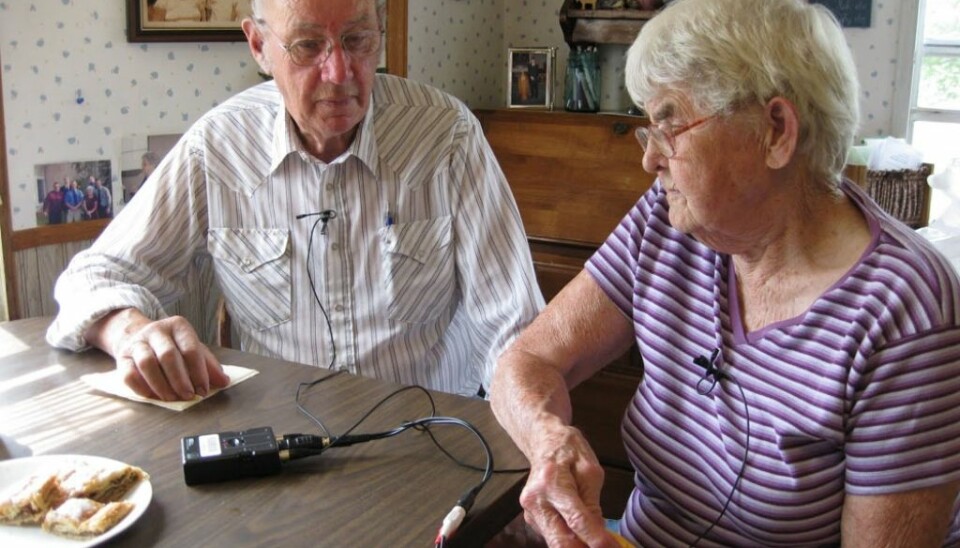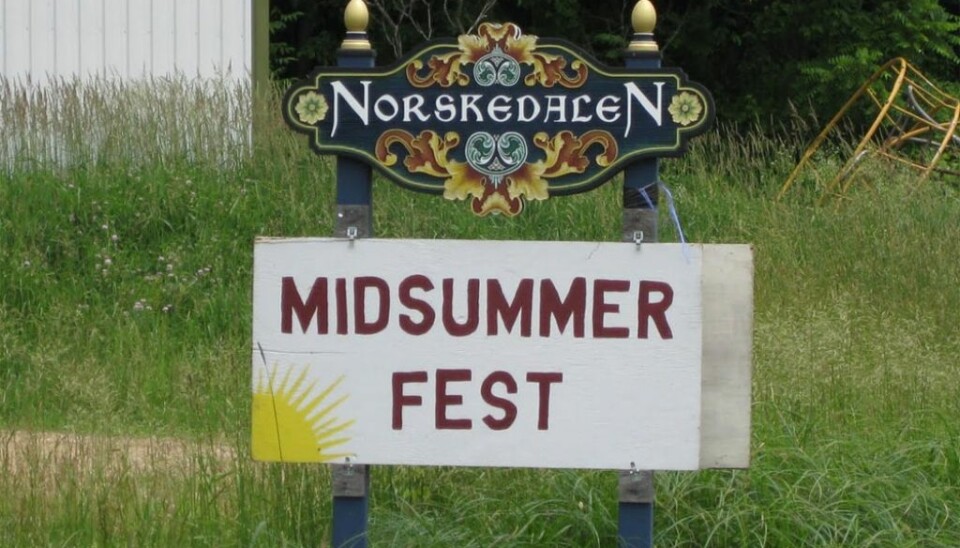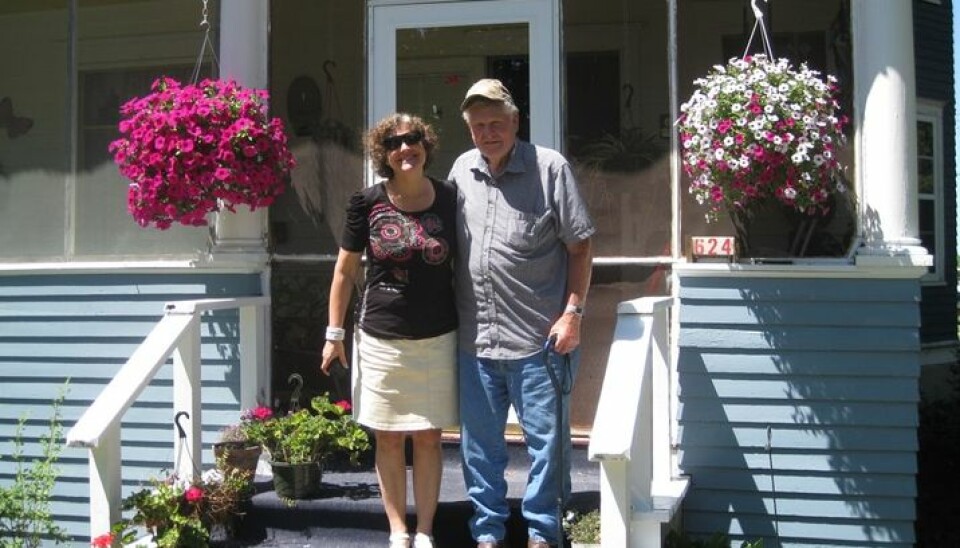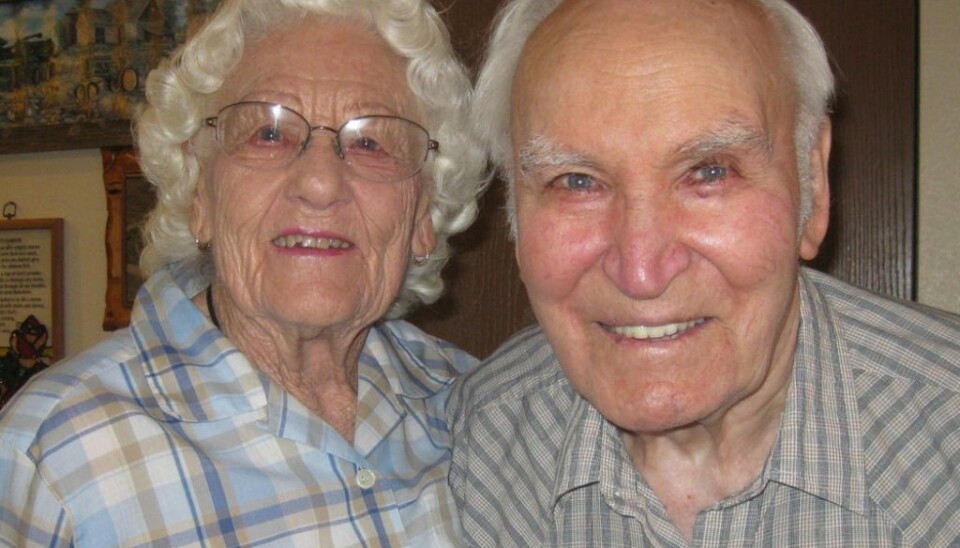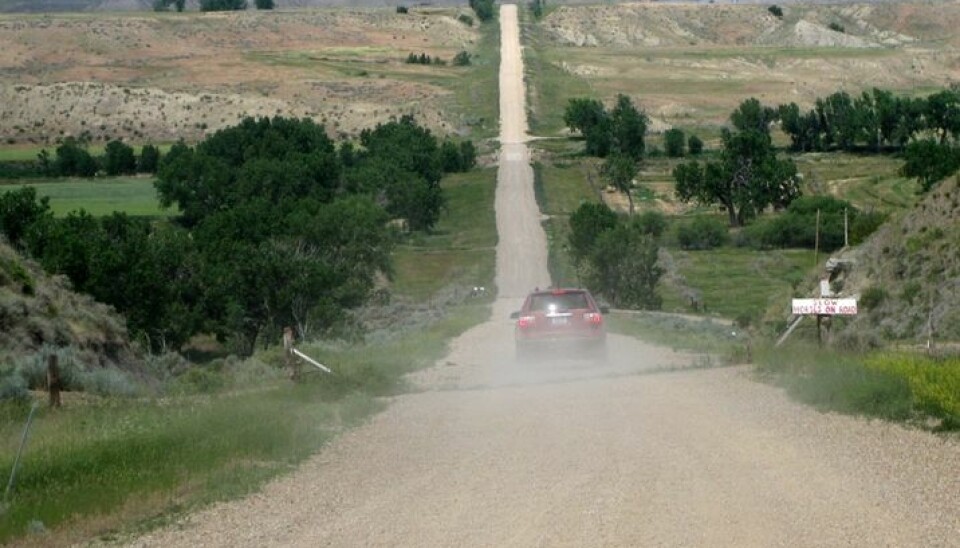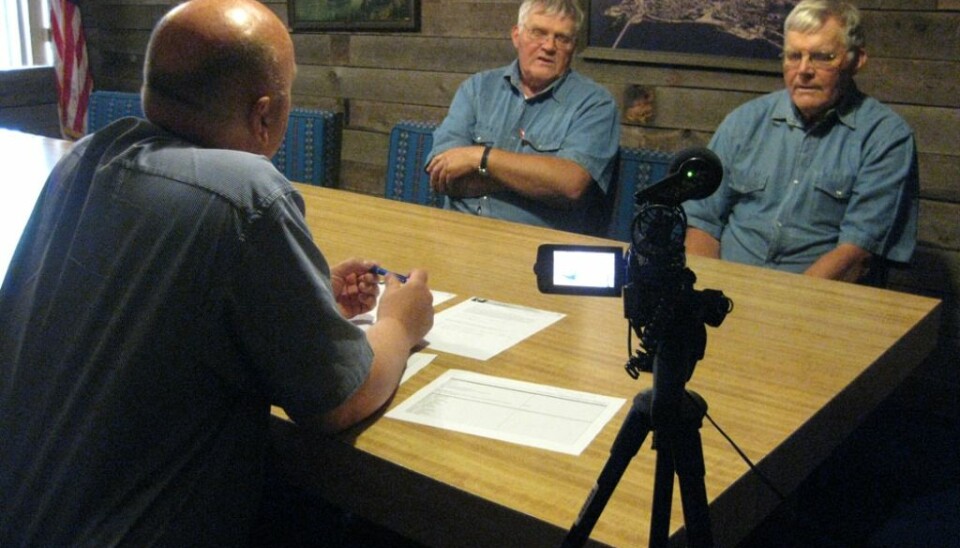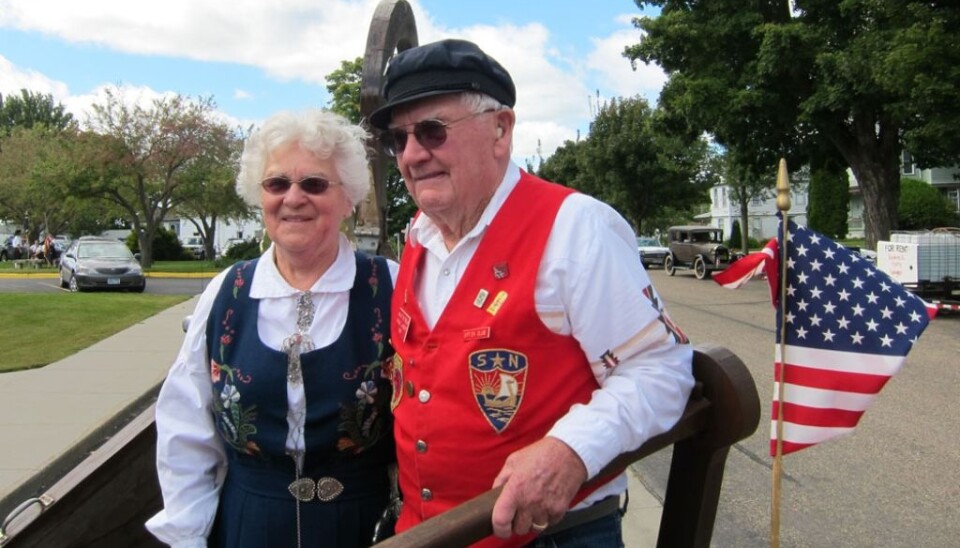
Where Norwegian lingo heads for limbo
The last generation of Norwegian-speaking Americans will soon be gone.
Denne artikkelen er over ti år gammel og kan inneholde utdatert informasjon.
Click on the picture to see the gallery.
Most of the remaining Americans who grew up with Norwegian spoken in their homes are in their 70s and 80s. Many are the second or third generations following Norwegian immigrants. Of course English is their main everyday language.
But the old language can stick. When the opportunity arises they can switch over to Norwegian, usually well strewn with some American words.
Professor Janne Bondi Johannessen and colleagues from Multiling (the Center for Multilingualism in Society across the Lifespan) at the University of Oslo have encountered this many times.
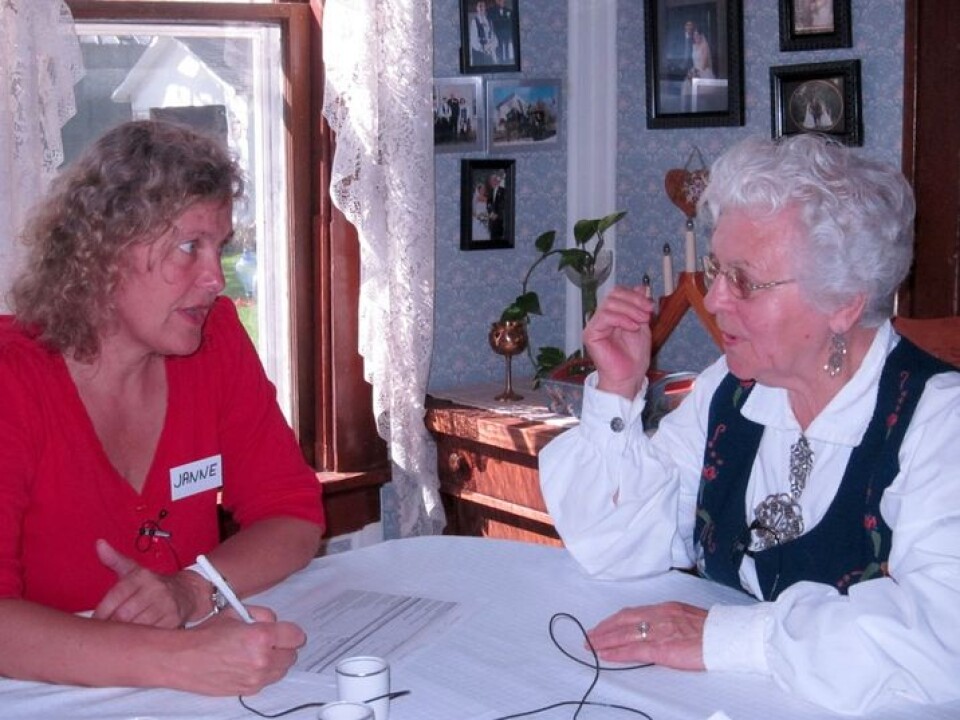
They have travelled round in the USA several times in recent years to make recordings of these offshoots of the Norwegian language.
Not familiar with Oslo dialect
The researchers rigged up their cameras and microphones in people’s living rooms and recorded conversations.
Bondi Johannessen says that sometimes the discussions were sluggish. In the beginning it could be hard to communicate with the elderly Americans in Norwegian:
“Their language was the dialect they grew up with and they had no ties to our modern Oslo vernacular.”
But other times the persons being taped could rattle off lengthy stories and recollections using nearly forgotten words and terms which popped up from the depths of their childhood memories.
Sound clip 1: Two of the informants joke about their early days as sweethearts.
Voices from the 1930s
The researchers also collect old recordings made by earlier researchers. neglected rolls of tape can be gathering dust in closets and storage rooms.
Or in basements.
They came across an old dusty travel chest belonging to professors in linguistics Didrik Arup Seip and Ernst Westerlund Selmer, who visited the USA in 1931 to document Norwegian dialects.
“The chest still had stickers on it and it contained recordings made on hollow wax cylinders – the predecessors of the flat records we recognise.”
The chest has become a decoration in the conference room of the researchers at Multiling. Much of the audio material was ruined, but some of the professors’ old recordings have now been made accessible on web pages of the Text Laboratory, which works on technical solutions for old as well as new recordings.
Sound clip 2: A ceremonious voice rings through behind the crackles and scratchy noises on this recording from 1931. This is during the Prohibition and the Great Depression. As a sign of progress, however, the finishing touches were being put on the Empire State Building in New York. But the man on the wax cylinder was mainly concerned about Norwegians.
A language in exile
The researchers at the Text Laboratory are trying to make all the recordings of Norwegian-speaking Americans available for research, as videos, sound files and transcriptions.
What is really the point in securing trivial and ordinary conversations with incidental Norwegian Americans? What can we learn from them?
Bondi Johannessen is not tongue-tied or at a loss for answers:
“First of all we can find out more about how language is altered when it encounters a more dominant language. What changes and what doesn’t?”
“It says something about how language as a system functions and about the system itself in the human brain.”
“There are also descendants of Swedish immigrants in America. If we compare the fate of their Swedish with the Norwegian of Norwegian-Americans, that will tell us something about minority languages in general,” explains Bondi Johannessen.
Minority children
The old Americans’ experiences with language can boost our knowledge about children with minority languages.
What is it like to grow up with a language in your home that differs from the language of society around you? Should parents with a foreign background stop speaking their native tongue at home and start concentrating instead on the new language?
Researchers don’t all see eye to eye on that issue. Some think that bilingualism confuses a child, some see it as enriching.
Bondi Johannessen thinks that it is just fine for a child to learn several languages. In any case, it’s important to learn at least one language fluently, even though it might be a minority language.
“A number of studies show that in order to achieve good language abilities you need to learn one language well, with all the nuances.”
“If the only language you learn is an incomplete and weak variation of a majority language, it’s a very poor point of departure for future language comprehension.”
Children cannot learn Norwegian
The old Norwegian-Americans can teach us something about how parents choose language for their children. What made the now elderly generation of Norwegian-Americans opt without exception to refrain from teaching their children Norwegian?
And how did this affect their children?
“The elderly who grew up in with Norwegian as a solitary language often felt it tough when starting at an American school. This weighed in on their decision to only teach their children English,” says Bondi Johannessen.
The descendants of the Norwegian speaking Americans are often conscious and proud of their Scandinavian heritage but none of them speak the language. So time is running out,” says Bondi Johannessen.
If these special examples of language in exile are to get further documentation, it has to be done now.
------------
Read the Norwegian version of this article at forskning.no
Translated by: Glenn Ostling







